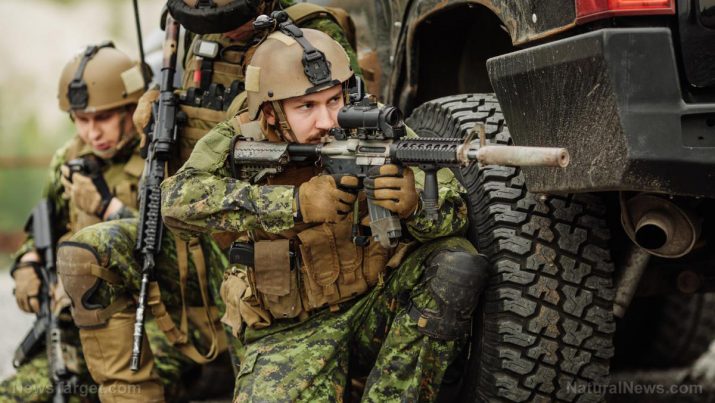
Robot-controlled vehicles could soon be restocking military front lines with ammo, food, fuel
Saturday, November 18, 2017 by Jhoanna Robinson
http://www.futuresciencenews.com/2017-11-18-robot-controlled-vehicles-could-soon-be-restocking-military-front-lines-with-ammo-food-fuel.html

The British Army has conducted an initial test of its new line of robotic vehicles during a scheduled exercise in Michigan in the United States.
Driverless robotic all-terrain 4x4s were run by unseen British soldiers using Xbox controllers as the Ministry of Defence told the public on Tuesday, November 14 that it will join the United States to trial an improved method of transporting ammunition, food, and fuel to the front lines.
Footage from the exercise, which has been three years in the making, shows a robotic convoy of the trucks rampage across the big landscape led by the six-ton British Army MAN SV. The truck and the U.S. Light Medium Tactical Vehicles that immediately follow after the behemoth utilize integrated robotics to decide speed and steering, among other functions.
They have also made use of Hoverbike drones to simulate delivering supplies in the most dangerous “last mile” up to the battlefield, which is part of a technology called Coalition Assured Autonomous Resupply (CAAR).
“One hundred years ago we pioneered tank warfare with our U.S. allies, and today we remain right at the forefront of military technology together. This exercise has proven the success of our ongoing investment in science and technology as we see concepts becoming reality,” Defence Minister Harriett Baldwin said.
“This particular project is spearheading solutions to the notoriously dangerous operation of supplying our frontline on the battlefield. Delivering crucial food, fuel, and ammo remotely will help save soldiers’ lives,” Baldwin added. (Related: DARPA developing mechanically augmented ‘super soldiers’ uisng motorized exoskeletons.)
For his part, Pete Stockel from the Defence Science and Technology Laboratory, said: “This is the first time that we have created a U.K.-U.S. coalition semi-autonomous leader-follower convoy to bring to life concepts which will provide solutions to de-risk the Last Mile of logistics support to the front line. We are enormously excited to be working with our U.S. colleagues on this project, delivering on the commitment announced at the Farnborough Airshow in 2016. It has been an exciting challenge to drive this forward at pace. This could be a step-change in how operational risk could be managed, costs could be reduced, and – ultimately – lives could be saved, as a result of harnessing this rapidly evolving technology.”
Among the new Hoverbikes are the Polaris MZR, which is geared with lidar, a form of radar, to help it navigate bumpy roads. Lidar (light detection and ranging) scanning is characterized by one or more lasers transmitting short pulses, which bounce back when they encounter an encumbrance, such as clouds, leaves, or rocks. It can travel at speeds of up to 25 miles per hour.
In autonomous vehicles, these sensors routinely watch over the surrounding areas, sense the vibe of the area, and act as the “eyes” of the car.
What this exercise aims is to develop driverless vehicles so that physical harm that befalls soldier drivers of tanks can be avoided. Thus, the two armies plan on making autonomous resupply the norm.
To find out more about how countries prepare against issues of national security and acts of terrorism, visit Terrorism.news today.
Sources include:





